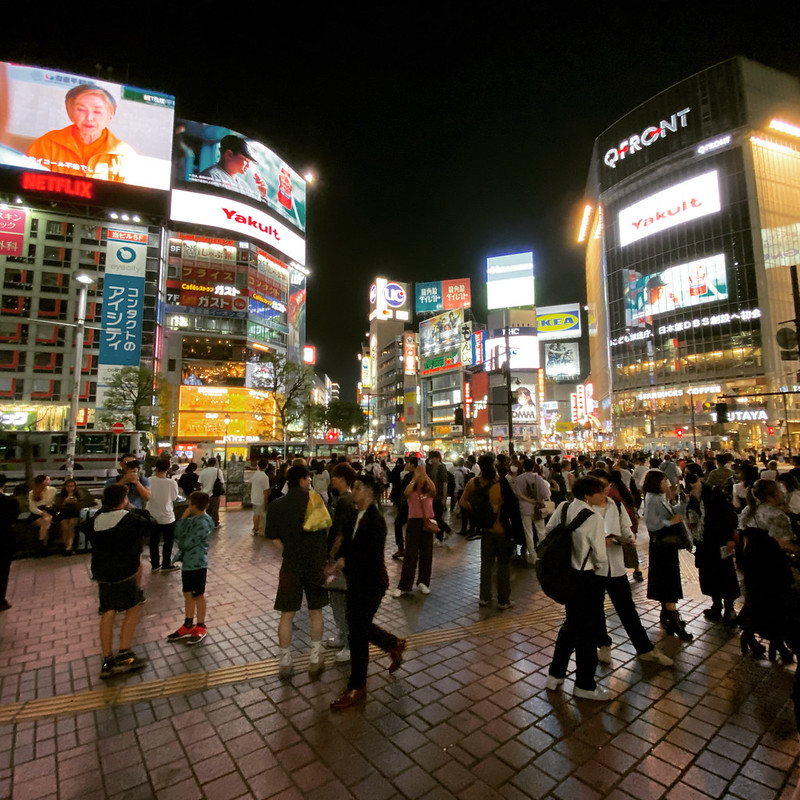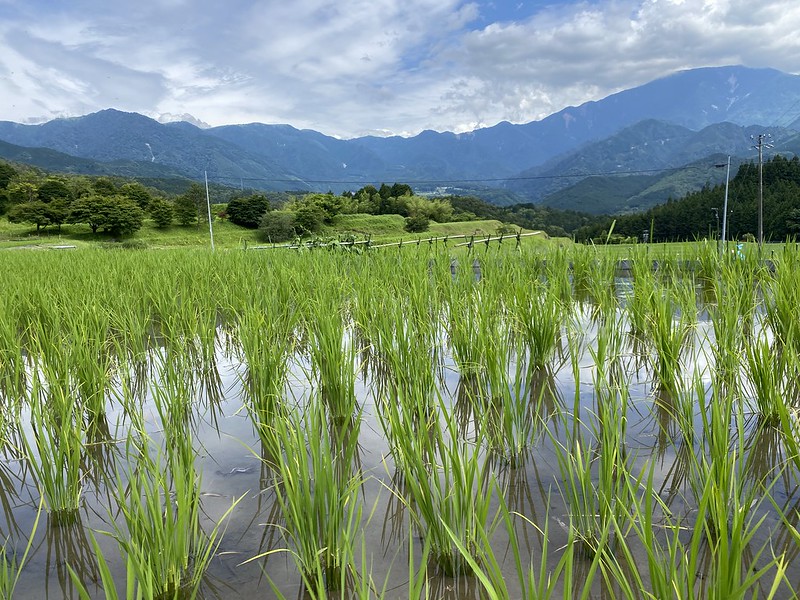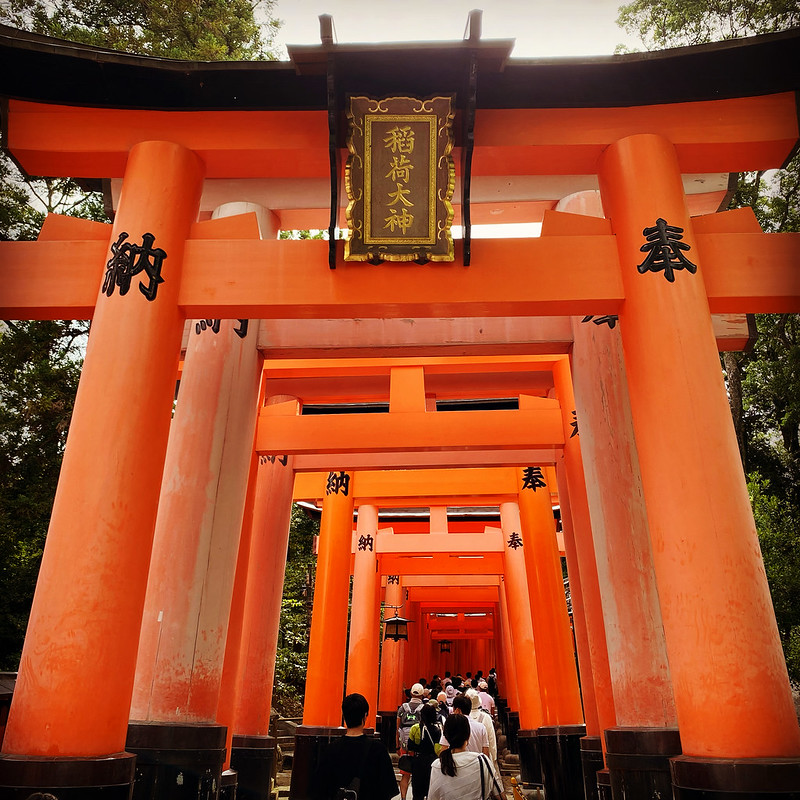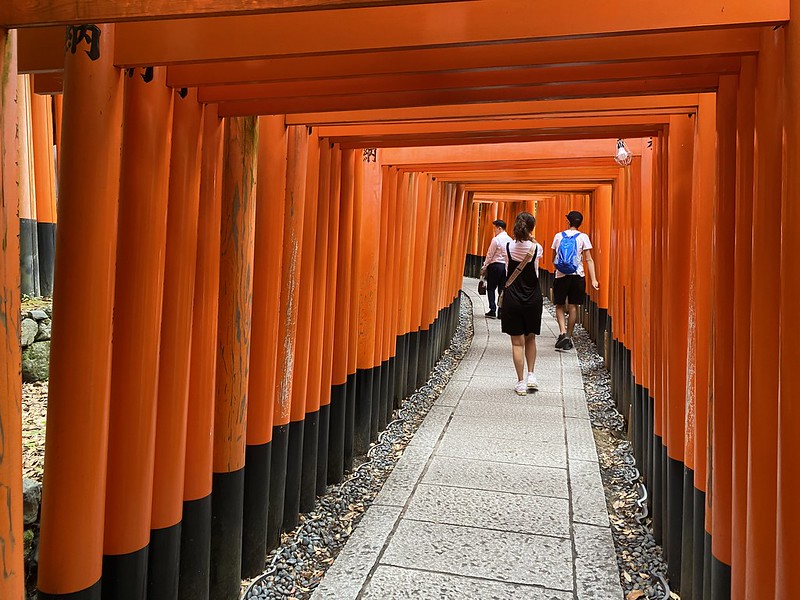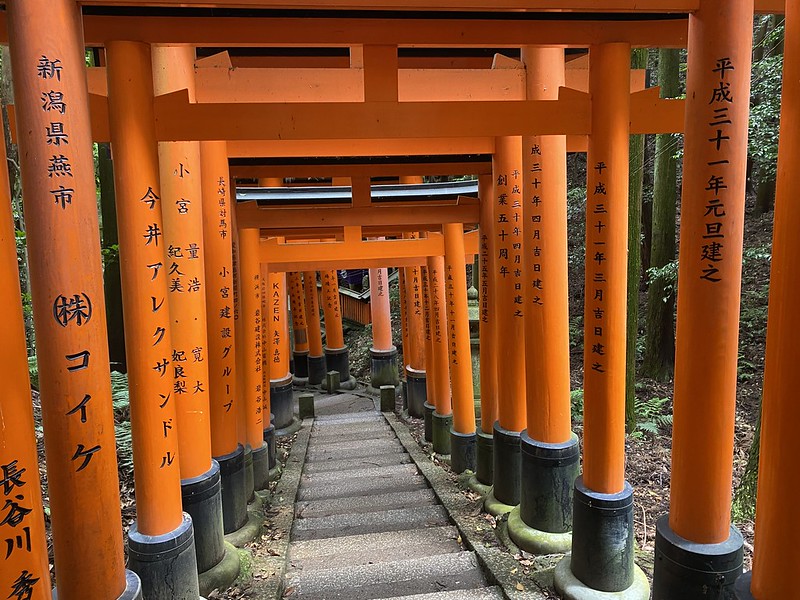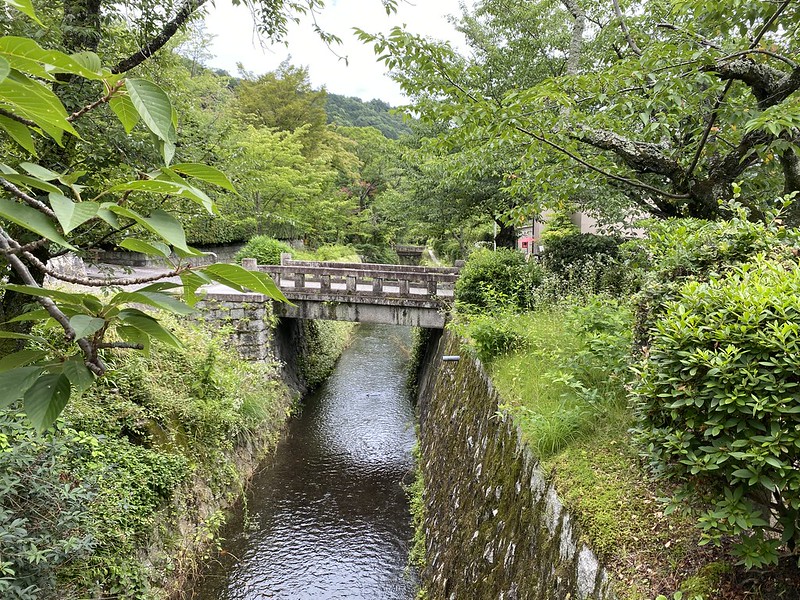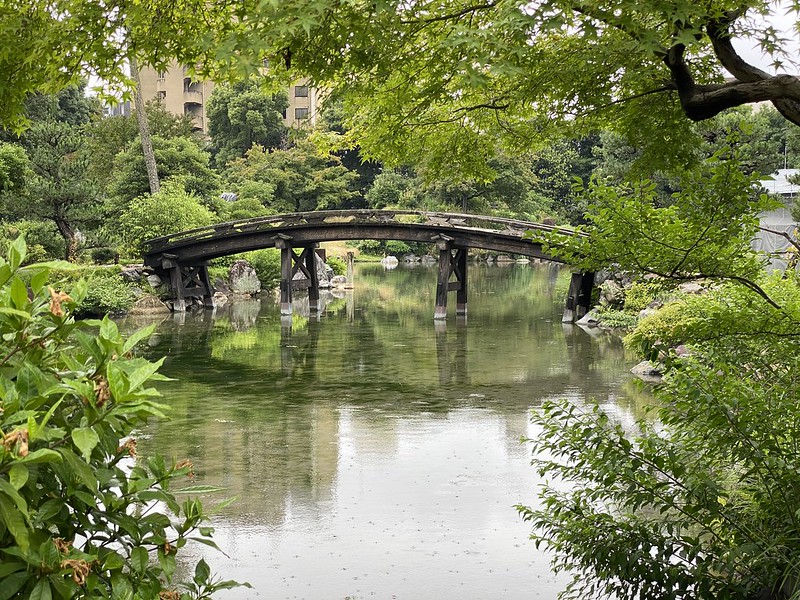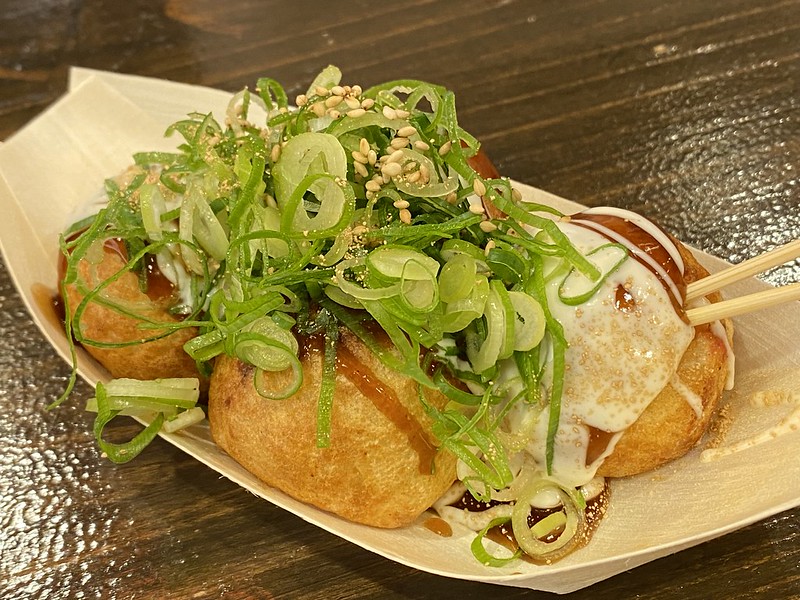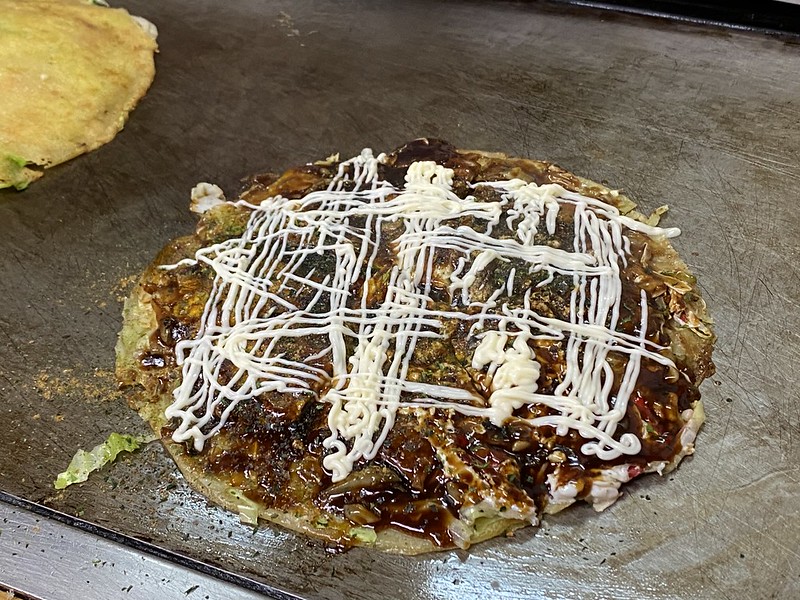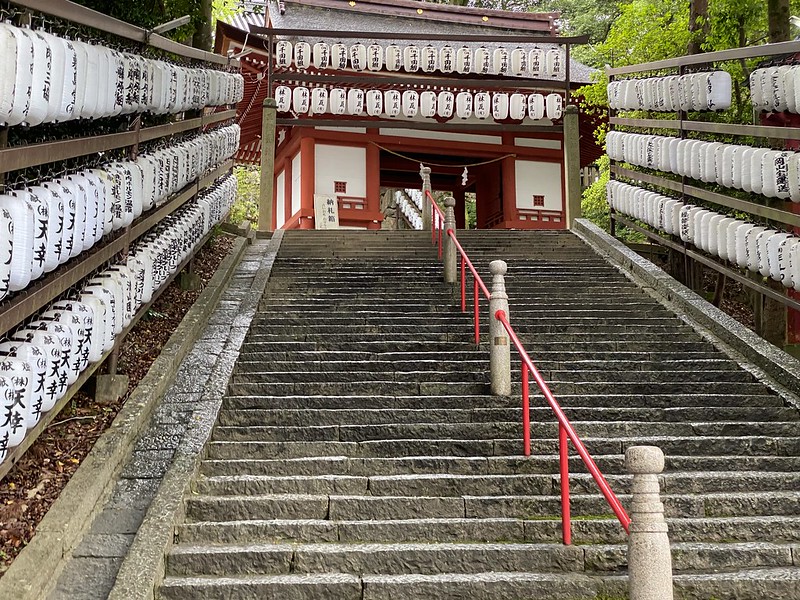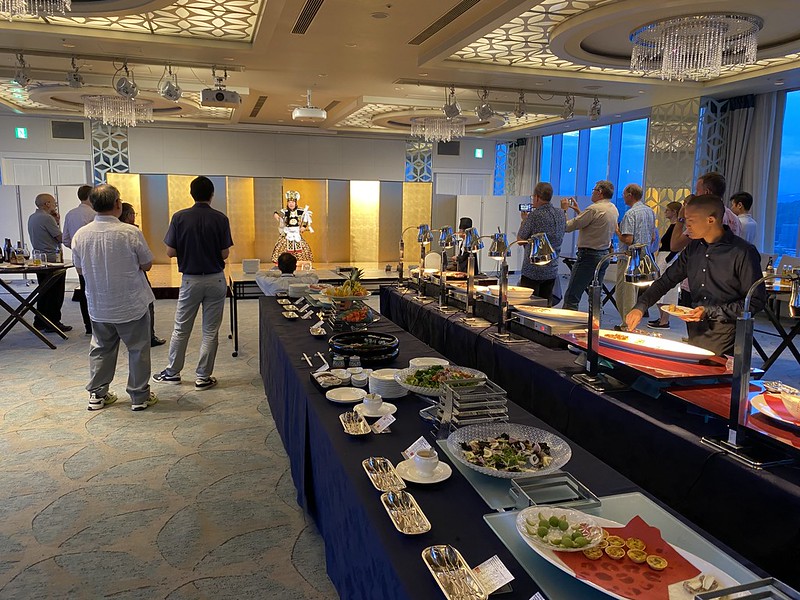This morning (29 June – I’m posting this on the 30th) was another sleep in. We’re finally catching up on some of the sleep missed during earlier nights on this trip due to finding it difficult to sleep in unfamiliar surroundings. I had another salady thing, this time with large chunks of tofu, from 7-Eleven for breakfast and M. had the granola and coffee from Blue Bottle at Shinagawa Station again. After a lot of onigiri breakfasts we’ve really been feeling the need for something more like our normal diet.
Our first port of call today was Ueno. We caught the train from Shinagawa there and then took a leisurely stroll through Ueno Park, checking out the gardens, a small Buddhist temple, a larger shinto Shrine, and the lake, which was completely covered by huge lotus leaves. There were a handful of pink lotus flowers visible, but none in full flower yet. Presumably in a month or so the lake will be spectacular with huge pink flowers everywhere. There were several large crows cawing loudly and fluttering around – we’ve seen them in many places so far on this trip. But by the lake there was also a large Japanese cormorant preening its feathers, and I managed to get up very close to take a good photo with my phone, it was so tame.
Again the heat and humidity were oppressive and we walked slowly and sought shade wherever we could, lingering there before tackling the next stretch of sunny ground. We didn’t linger too long in the park before going to check out the shopping area south of Ueno station. At first we though it was similar to other areas and not that interesting, until we stumbled into an older region with smaller shops and stalls, kind of resembling a bazaar or permanent market. This was more interesting to wander through, with a wide range of products form cheap and tacky to household supplies to antiques to fine jewellery, and also many stalls selling fresh fish, meat, or vegetables, as well as lots of hot street food. We wandered few blocks and then found a covered alleyway with stalls long it and took this to get out of the sun.
We emerged near Okachimachi station, where there was a large Uniqlo store, which my wife suggested we look inside to cool off in the air conditioning and also to use the toilets. While browsing around in there we ran across a display and desk selling items including T-shirts and tote bags that could be customised by printing any design you wanted on them. Several examples showed photos of cats or dogs. My wife decided to get a bag with a photo of Scully printed onto it. It took a bit of fiddling to get a suitable photo transferred to their system from her phone, but once that was done the print was ready in just a few minutes, and turned out looking great.
Next order of business was finding some lunch. We wandered roughly southwards towards Akihabara, and ran across a square which I later discovered was called Okachimachi Panda Square. It had four food trucks parked in it, and we checked what each was selling. The first had corn dogs and karaage chicken and a couple of other fried things; the second shaved ice; the third waffles; and the fourth various meat-filled croquettes. The only sensible option for my wife was the waffles, so we checked the picture menu pasted to the side of the truck, and they had savoury as well as sweet! There was a ham and cheese filled waffle for example, and next to it what looked like a waffle filled with just melty cheese like a sort of toasted sandwich. We asked and the woman in the truck said it was cheese and honey. So we got one of those for my wife and I went back to the first truck to get some of the chicken karaage. A woman picking up a corn dog helped me with English translation because the woman in the truck spoke no English, and I got a large serve of karaage with spicy sauce (there was also a mild option). When I saw her start preparing it I wondered if I’d ordered way too much! I received a large box piled high with fried chicken pieces, coated in spicy red sauce. It wasn’t all that expensive, so I was surprised by how much I got. It was delicious, and I managed to eat it all, but was very full afterwards.
Since we were close to Akihabara, we walked a few blocks south and watched the streets transition into shops filled with electronics, video games, toys, and various geeky things. I’d picked four shops to try to find specifically to look for any interesting roleplaying games, or potentially worthwhile Magic: the Gathering cards. The first one we found was Retro Game Camp, but this turned out to have nothing but video games, despite some web articles mentioning it had card games. The shop called Grand Panda Canyon was supposed to be located in exactly the same place according to Google Maps, but it took some effort to find. We circled the entire block and returned to Retro Game Camp before noticing as tiny, worn sign indicating the store was up a dingy, narrow flight of stairs immediately next to the former. We climbed up and found a tiny store with trading card games, but almost all various Japanese ones. They had a small section of MtG cards, but not many and I scanned it in under a minute before leaving.
Around the next block was the Mandarake Complex, a series of shops spread over 8 floors with different things on each floor. I wanted to check the toys on level 8 and cards n level 7. We found an outdoor staircase leading up, next to a lift that bore a sign saying “Staff Only”. My wife didn’t like the look of the exposed metal staircase and said she’d wait inside the ground floor while I climbed up. I did so to the 8th floor first. When I stepped inside the door I found two lifts inside for customers! Oh well. The toy floor was not so interesting for me, so I went down to 7 for the cards. Again it was mostly Japanese games, but they had a small MtG section, larger than Panda Canyon, which I looked through quickly, but didn’t see anything that grabbed my attention to contemplate buying.
Next stop was Yellow Submarine, which was the most likely place for roleplaying and board games according to web reviews. They indeed had many of each. I was interested in any perhaps second hand or old D&D books. They had some 2nd Edition D&D, and of course 5th Edition, and several other games in Japanese, but nothing vintage enough or intriguing enough for me. The board game section was larger and had many interesting things, including a section of obscure games I’d never heard of, designed by Japanese designers. Some had English rules taped onto the outside of the box. I bought a couple of games I thought looked interesting, and also a game to give as a gift to our friends for dog-sitting Scully. Oh, and I found some cool dungeon tile map geomorphs which were pretty cheap and also flat for packing, so I bought one of those.
Finally we walked over to Yodobashi Camera to have a look at the toys floor in this giant electronics store. We went up and looked around quickly, using the toilets halfway through doing a circuit of the floor. There wasn’t very much of interest for me on Yodobashi’s toy floor, it being mostly kid’s toys, with only a very small section for card games and puzzles.
From here we went to Akihabara station, where we stopped at a Starbucks to get cold drinks and use the WiFi for a bit, before heading back to Shinagawa on the train. We rested in our room for about an hour, cooling down from the heat of the day before preparing for dinner.
For dinner we were meeting an old work colleague of mine and his wife at Ebisu station, and they were taking us to an okonomiyaki restaurant that they’d booked. We caught the train from Shinagawa and arrived on time. They’d said to meet at the west exit of the station, but when we exited the gates there was only a sign indicating the east exit. Presumably we were on the wrong side and needed to cross back over the tracks somehow to the western side of the station. We had to wander around a bit until I spotted a sign pointing to a west exit. We followed it down a long passageway and emerged down a long escalator to ground level that spilled us onto the footpath. We turned around and confusingly there were signs indicating that up the escalator we’d come down was the east exit, but right next to us another passage at ground level was apparently the west exit. I couldn’t see our friends, so we milled around a bit in confusion until thankfully I spotted one of them approaching.
He said his wife would meet us at the restaurant and led the way to a place called Suzume-no Oyado, which translates to Sparrow’s Inn, in a building complex called L’Gente Ebisu. There we met not only his wife but their two children as well, about 6 and 3 years old. They spoke good English and their father said they’d been raising them bilingual and in fact their English was probably better than their Japanese. We sat in a tatami room, removing our shoes to sit on cushions on the floor at the low table. They confirmed my wife’s food requirements and then ordered for us.
We got a series of appetisers including baby eggplant in a thin sesame sauce, insalata caprese, karaage chicken and karaage chicken gristle (crunchy! – the gristly bit near the breast bone), tempura avocado and corn, thickly sliced snapper sashimi, and grated yam in nori sheets. Then came the main course, the waitress firing up the hotplate in the middle of the table and adding some eringi (king oyster mushrooms) and asparagus to cook first. These were to eat separately while they prepared and cooked okonomiyaki, mixing the batter and ingredients at the table and putting it on the hotplate for us. We had two vegetarian ones, with cheese and vegetables, and three different meat ones. We took cut pieces once they were cooked and topped them okonomi sauce from a pottery jar with a bamboo dipper, mayonnaise, seaweed flakes, and shaved bonito flakes for those who ate meat. When we were too full to eat the last couple of pieces we had some dessert; I had the yuzu sherbet. The whole meal was very nice.
We also spoke with our friends and learnt about their time in Japan and the fact they were planning to move back to Australia after this year. As we were leaving, the restaurant staff offered us free peaches. They said they had too many and didn’t want to waste them. I said I’d take one, and our friends took one too. The peaches were large and fragrant and probably very expensive, give the prices for fresh fruit here in Japan.
With dinner over, they walked us back to Ebisu station in a light rain and parted ways there. We caught a train back to Shinagawa and our hotel for the night.

